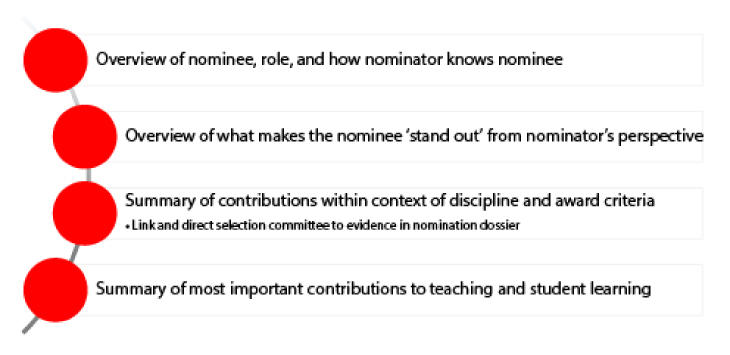What makes a strong teaching award nomination letter?
Dr. Natasha Kenny, PhD and Dr. Carol Berenson, PhD, Taylor Institute for Teaching and Learning
December 2016
We recently hosted a workshop on preparing a strong nomination letter for the University of Calgary Teaching Awards program. During this presentation, we highlighted that the strongest nomination letters:
- Bring the nominee to life. Strong nomination letters provide a genuine perspective, and specific examples of the nominee’s contributions to teaching and student learning. The best letters are prepared by someone who is deeply familiar with the nominee’s accomplishments – someone who can provide specific examples related to the nominee’s teaching and learning practices, and bring their classroom to life for selection committee members.
- Pull together all components of the nomination package. Nomination letters should clearly highlight the nominee’s strengths and accomplishments by clearly aligning the award criteria with the claims made about the nominee and the evidence provided throughout the package. As highlighted on the 3M National Teaching Fellowship website, the nomination letter should read as an executive summary for the entire nomination package.
- Link to and are often structured around specific award criteria. Strong nomination letters make the implicit explicit, by strategically directing selection committee members to specific evidence presented throughout a nomination dossier and in the letters of support, as well as by explaining how these align back to the specific teaching award criteria. They may even contain brief quotes which further direct committee members to evidence presented in the dossier or letters of support.
- Clearly highlight the nominee’s distinct accomplishments and contributions. Strong nomination letters clearly portray why the nominee “stands out.” They often highlight unique stories or contexts which leave the committee with something to remember.
Although the format and structure of each nomination letter will vary based on institutional context and the award requirements, Figure 1 highlights and typical structure for writing a letter.

Figure 1: Typical structure for preparing a nomination letter.


